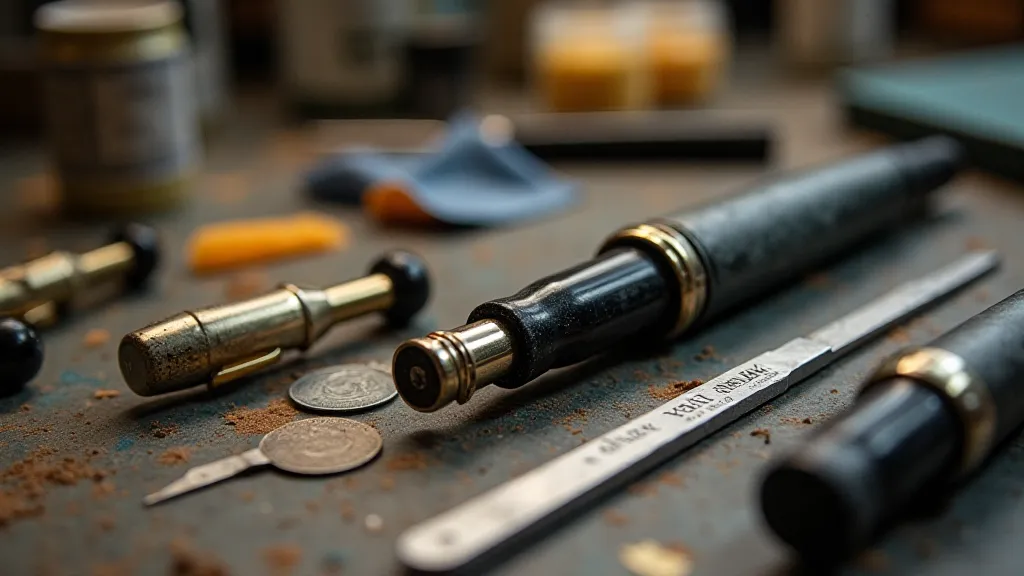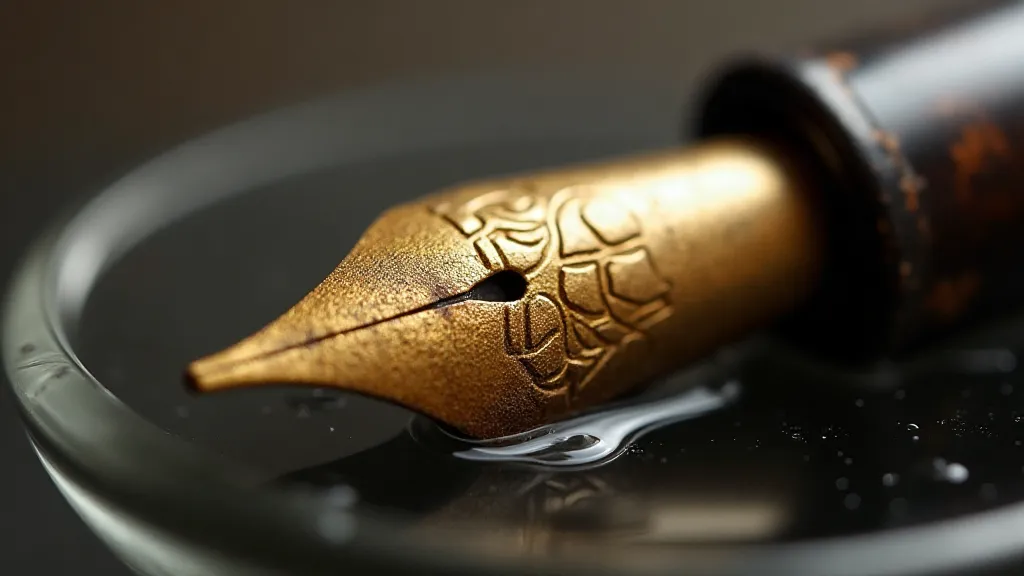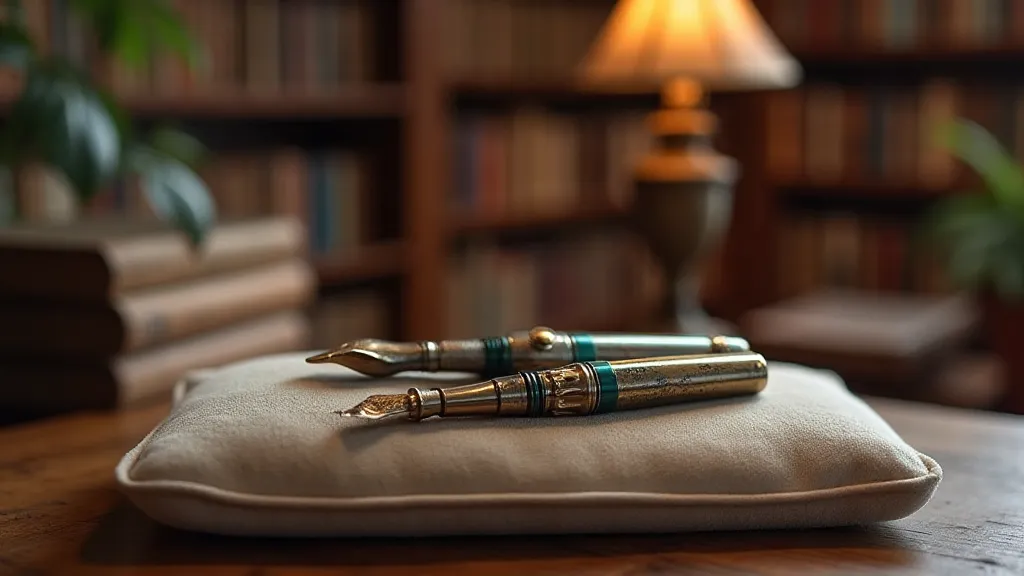The Whisper of Absence: Restoring Lost Voices Through Antique Pen Repair
There’s a profound sadness that clings to some objects, a quiet echo of lives lived and stories untold. Antique pens, particularly, possess this melancholy aura. They aren’t merely writing tools; they’re vessels, once held by hands now still, voices now muted. To hold one is to briefly connect with a past we can only glimpse, to feel the weight of history condensed into a small, elegant form. And when these pens are broken, neglected, or simply silent, it's a loss felt beyond the practical.
My fascination with antique pens began, not with a collector’s zeal, but with a feeling of responsibility. I found a Waterman Ideal 52 at a flea market, its nib twisted, its filling system corroded. It was beautiful in its decay – the mottled celluloid, the intricate clip – but useless. Something about its state of abandonment resonated with me. It felt wrong for something so exquisite to be cast aside. That’s when I began to learn the delicate art of restoration – a process not just of repair, but of resurrection.

The Ghosts in the Ink
Restoring antique pens isn't about making them “new.” It’s about honoring their age, revealing the beauty of their original design while understanding the stories they hold. Each scratch, each imperfection, is a mark of a life lived – a letter written, a contract signed, a love note penned. Removing these completely would be erasing history. Instead, the goal is to stabilize the pen, to ensure its functionality without compromising its integrity. The fragility of ink itself, and its propensity to fade or disappear over time, often underscores this sense of loss and the preciousness of the written word. Consider the broader context of Ink's Ephemerality: A Reflection on the Transient Nature of Collectible Pens – a poignant reminder of how easily a legacy can vanish.
Consider the pens produced by L.E. Waterman in the late 1800s and early 1900s. Waterman revolutionized fountain pen design with the introduction of the lever-filling system, a significantly improved alternative to the unreliable pockered fillers of the time. These early Waterman pens weren't just tools; they were symbols of progress and sophistication. They were held by businessmen sealing deals, writers crafting masterpieces, and individuals simply expressing themselves on paper. The very act of writing with a Waterman, back then, carried a certain prestige.
And then there’s Montblanc. Founded in 1906 in Hamburg, Germany, Montblanc initially struggled to gain traction. Its early models were often considered imitations of American designs. However, their commitment to quality and craftsmanship – even when facing economic hardship – eventually established them as a global icon of luxury writing instruments. A 1920s Meisterstück, though seemingly just a pen, represents a pivotal moment in the evolution of luxury goods – a symbol of enduring quality and aspirational elegance.
Each pen has its own challenges. Celluloid, a common material for early pen bodies, is notoriously brittle. Nibs, often made from 14-karat gold, can be damaged by corrosion or physical stress. Filling systems, whether lever-operated or piston-driven, can become clogged with dried ink and sediment. The restoration process involves careful disassembly, meticulous cleaning, and delicate repairs. It's a labor of love, requiring patience, skill, and a deep respect for the object’s history.
The Craftsmanship Speaks
What’s truly remarkable about antique pens is the level of craftsmanship involved in their creation. These weren't mass-produced items churned out by machines. Each component – the nib, the barrel, the cap – was painstakingly crafted by hand. The intricate designs, the precise tolerances, the attention to detail – it’s a testament to the skill and dedication of the artisans who built them. The legacy of these artisans resonates far beyond the pens themselves, influencing design sensibilities even today. The very act of writing is intertwined with the history and feel of the pen itself, influencing the flow of narrative. This connection is wonderfully explored in The Weight of Words: How Pen Feel Influences Narrative Flow.
Consider the Parker Duofold, introduced in 1921. Its vibrant colors and bold design were a direct response to the somber aesthetic of the post-war era. The pen’s distinctive faceted barrel, achieved through a complex series of cuts and polishes, was a significant achievement in pen manufacturing. It wasn't simply about creating a beautiful object; it was about pushing the boundaries of what was possible with pen design.
The sheer artistry goes beyond mere aesthetics. A well-crafted nib, for example, is more than just a piece of metal. It’s an instrument of expression, capable of producing a wide range of line variations depending on the pressure and angle applied. The tines, the breather hole – each element plays a crucial role in the pen's writing characteristics. The process of tuning a nib – subtly altering its shape and alignment – is a delicate art, requiring years of practice to master. To hold a properly tuned nib is to experience a connection between the hand, the pen, and the written word that’s almost meditative.

More Than Just Repair – Preservation
The act of restoring an antique pen isn't just about fixing a broken object. It's about preserving a piece of history, giving voice to a forgotten era. Each restored pen is a reminder of the people who once used it, the stories they wrote, the lives they lived. It’s about ensuring that these stories aren’t lost to the passage of time. The way styles were expressed in writing, and how a particular pen might lend itself to certain styles, is deeply tied to the cultural landscape of the time. To understand this connection truly immerses one in the history of writing itself. This is reflected in the captivating article, The Ghost of Ink: How Early Pen Design Echoes Lost Writing Styles.
It's humbling to imagine the hands that previously held these pens, the thoughts that flowed from them. A simple restoration project can become a profound connection to the past. Sometimes, I find faint traces of ink within the pen’s reservoir, phantom echoes of messages sent long ago. It's a powerful reminder of the human connection inherent in these objects.
There's a certain satisfaction that comes from breathing new life into something old, from transforming a neglected relic into a functional work of art. But the greatest reward is knowing that you’ve played a small part in preserving a piece of history, allowing its voice to be heard once more. Perhaps a future writer will use a restored Parker Vacumatic to craft a bestseller, or a student will use a Waterman Ideal to learn the joy of handwriting. The possibilities are endless. The passing of time also leads to the decline and obsolescence of once-cherished tools. A poignant exploration of this phenomenon can be found in The Inkwell's Lament: A Study in Obsolescence and Enduring Craft. The careful attention to detail and the artistry involved are often lost to the relentless march of progress, making the preservation of these objects even more vital.

The whisper of absence can be silenced, if only for a time, by the gentle hand of restoration. It’s a quiet, personal act, but one that resonates with a profound respect for the past and a hope for the future. The value of these antique pens extends far beyond their monetary worth; they serve as tangible links to a bygone era, reminding us of the enduring power of craftsmanship and the timeless beauty of the written word.





